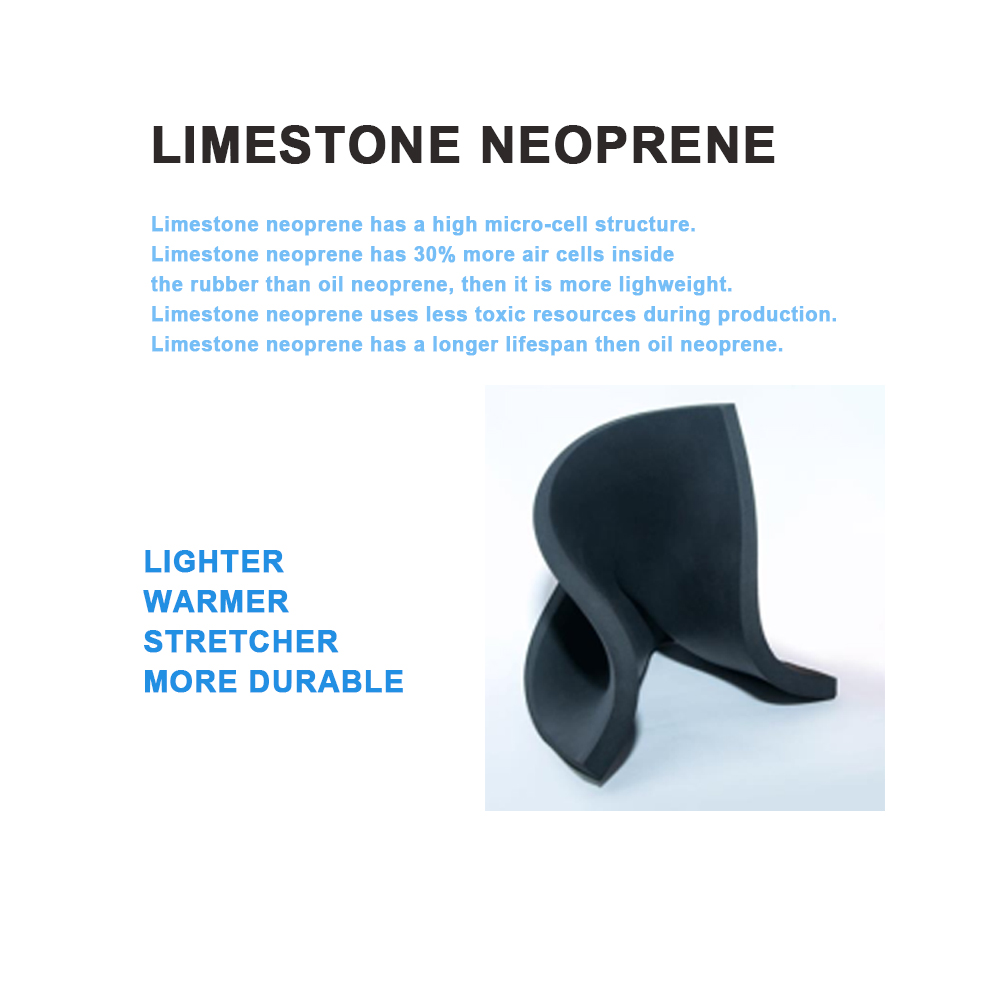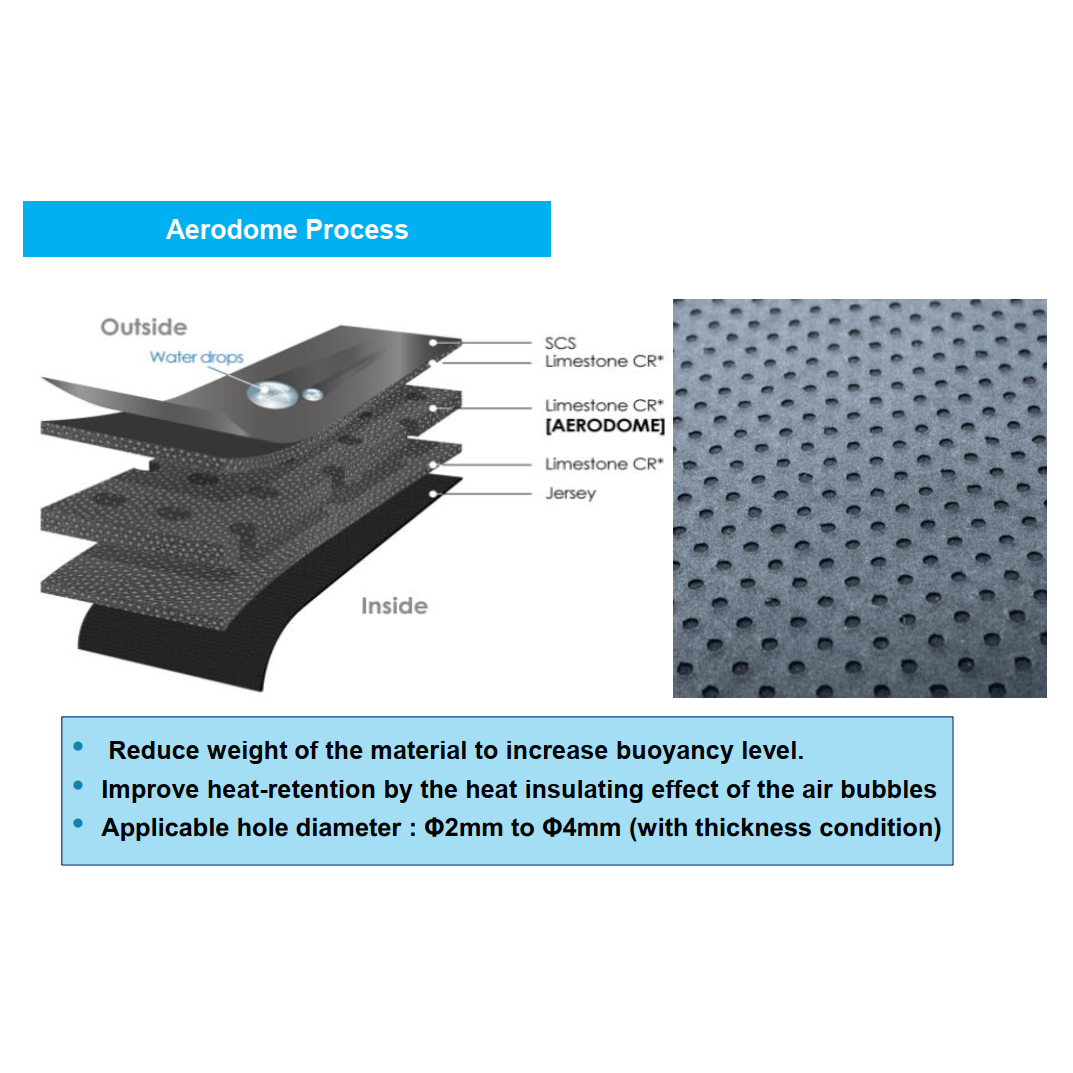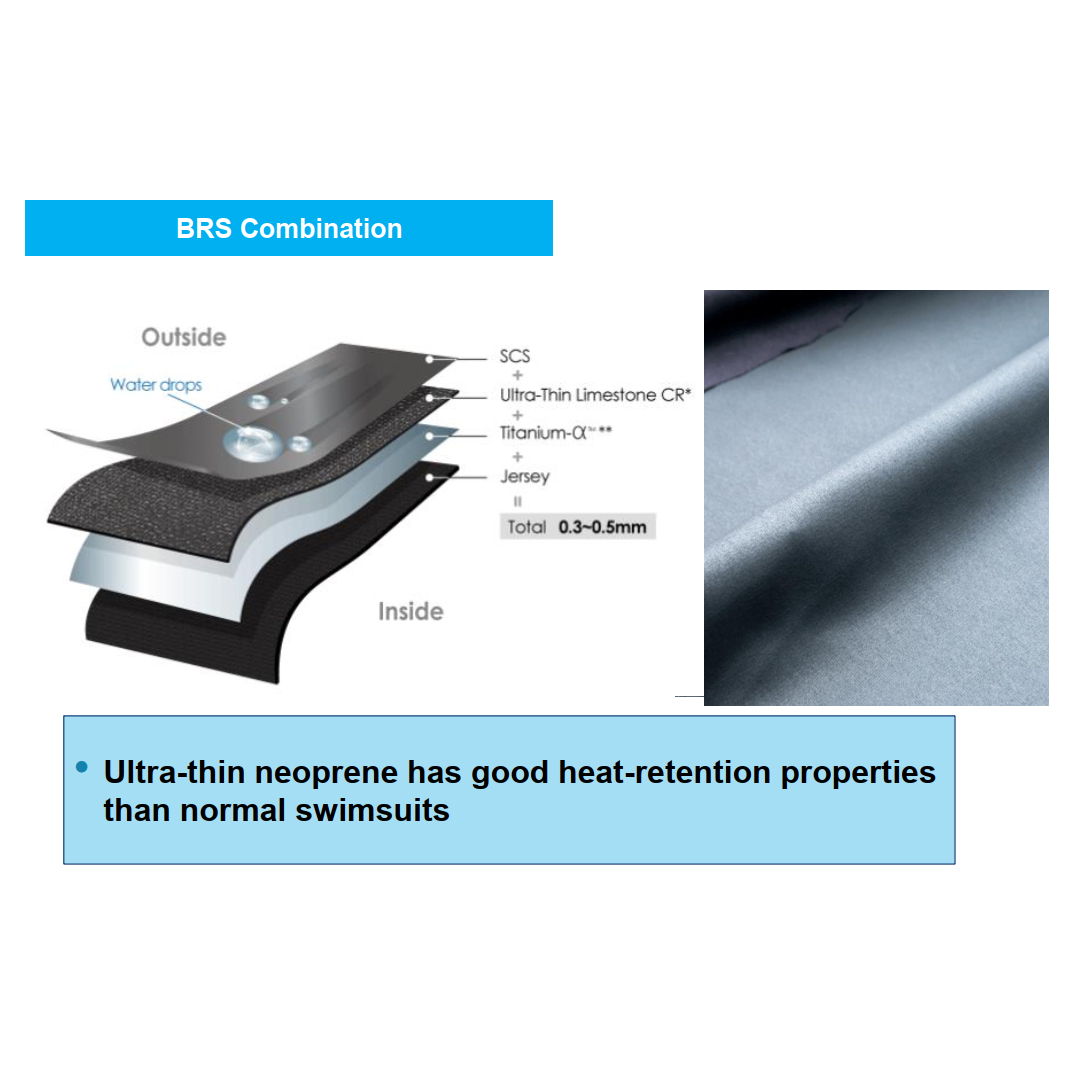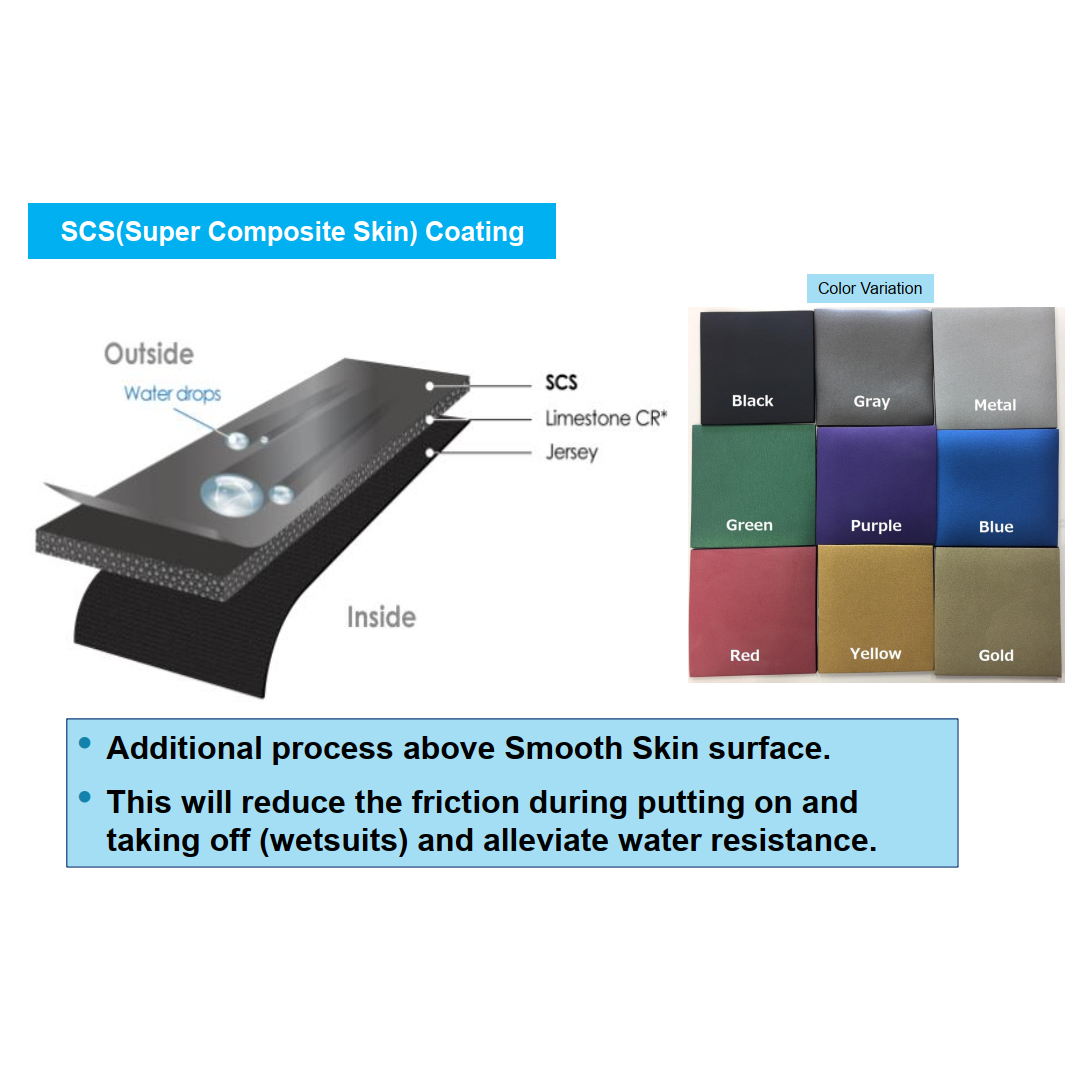Jul. 05, 2023
Is Eco-Friendly Neoprene Real to exist? Or is this just a case of marketing tool, designed to draw dollars from those who are trying to do the right thing?
Maybe It's only natural for people who love the outdoors so much to care about protecting our planet and preserving the beautiful spaces they enjoy. Those people who enjoy diving, surfing or kitesurfing, wearing a wetsuit may present this easy question.
It's a little tricky to answer honestly. At fact, we don't really believe that any neoprene is truly environmentally friendly. However, some are definitely better than others, so delving into the topic can help you become a smarter shopper. For example, exploring the difference between oil-based neoprene and limestone neoprene can help you understand the potential impact of your choice the next time you shop for a neoprene wetsuit.
OIL-BASED NEOPRENE
Neoprene is a synthetic rubber first developed by DuPont in the 1930s. It's made by mixing together melted polychloroprene chips, a foaming agents and pigments, then baking the mixture together to form a thick sponge. Traditionally, petroleum products have been used to make polychloroprene chips. Therefore, making the material requires drilling, harvesting, transporting and consuming a non-renewable resource called petroleum. Clearly, these should occur an environmental cost.
LIMESTONE NEOPRENE
Oil is a finite resource, and extracting, processing, and transporting it is energy-intensive and potentially dangerous. Limestone is also a finite resource. However, it is much more abundant and harvesting it has less environmental impact. It has been used for countless purposes over the centuries, and now Yamamoto from Japan has perfected the technique of making neoprene from limestone. Instead of using petroleum products to make polychloroprene chips, the key component of neoprene, Yamamoto used calcium carbonate from limestone. This change resulted in a greener neoprene with significant benefits for the environment and wetsuit users.

Nowadays the products from Yamamoto are so famous, such as Yamamoto 38, Yamamoto 39, Yamamoto 40, Yamamoto SCS (Super Composite Skin), Yamamoto Aerodome, Yamamoto BRS with the thinnest thickness by 0.3 mm all over the world…… and so on. The following advantages would let us know more why:



1. Warmer Material
The highly porous structure of limestone neoprene means that the material is filled with tiny air cells formed by closed cells. In fact, it has about 30% more air cells than other rubber materials. This has several advantages, including a warmer material. To match the warmth provided by the 2mm limestone neoprene sheets, 3mm oil-based neoprene sheets are required. The wearer can get more warmth from less stuff, and fewer raw materials are needed to do so.
2. Longer Lifespan
The tiny micropores in the oil-based neoprene are interconnected. In limestone-based neoprene, they are independent. The result is a more durable material that is less prone to tearing and is able to distribute pressure, stretch and stress across its structure. In short, neoprene wetsuits made from limestone tend to last longer. This results in better value for consumers, keeps wetsuits out of landfill for longer, and reduces the need to manufacture new neoprene.
3. Improved Impermeability
Neoprene absorbs some water, but the tiny air bubbles inside the material don’t. Since neoprene crafted from limestone has more air bubbles, it absorbs less water. That keeps wetsuits made from this material lighter and more comfortable.
All of the neoprene absorbs some water, but the tiny air cells inside the material can’t. As neoprene made from limestone has more air cells, then it absorbs less water. This lets wetsuits made from this material be lighter and more comfortable when using.
4. Reduced Environmental Impact
Mining limestone may take a toll on the environment, but it’s a smaller price than the one required for oil. Likewise, creating polychloroprene chips from limestone requires less energy than crafting them from oil products. Plus, Yamamoto takes care to choose eco-friendly methods of power generation.
As we know, mining limestone can be damaging to the environment as well, but its price is lower than what oil needs to be. Likewise, making polychloroprene chips from limestone requires less energy than making polychloroprene chips from petroleum products. In addition, Yamamoto carefully chooses environmentally friendly methods of generating electricity.
GREENER FUTURE
Finally, it's easy to make a convincing argument that neoprene made from limestone is more environmentally friendly than neoprene made from petroleum. However, claiming it is an environmentally friendly material is not really accurate. Fortunately for the planet and those who care about protecting it, the surf industry is still working hard to find neoprene that is truly eco-friendly.
There are more and more innovators, manufacturers and designers who are continuing to push the boundaries of green neoprene.
1. Jako neoprene from Korea, it has produced limestone material, its property is closed to Yamamoto neoprene more and more.
2. Neogreene, a material that reportedly uses 25 percent less electricity and 25 percent less petroleum than traditional neoprene, received a lot of attention when it was introduced in the 2000s. While the company behind it disappeared before the material hit the consumer market, the buzz it has caused shows that there is serious interest in environmentally friendly neoprene.
3. Meanwhile, the new developments continue to shape the next generation of wetsuits. Patagonia replaced neoprene wetsuits with wetsuits made from Yulex in 2010s. This product is made from natural rubber extracted from the hevea trees. While growing and harvesting rubber can cause serious damage to the environment, the materials used in Yulex come from growers who follow sustainable practices and protect ecological integrity and biodiversity. Others are working to develop new techniques and improve the adhesives and chemicals used in assembling and sealing wetsuits.
In conclusion, we're excited to share our love of the water by kinds of water sports, including surfing, diving, snorkeling, swimming, spearfishing, triathlon, kayaking, kitesurfing. As a OEM or ODM custom wetsuits manufacturer, Wetop Sport are passionate about creating more unique and creative products by wholesale, customization. We're proud to offer a range of neoprene wetsuits, drysuit, neoprene life jackets, rash guards, diving mask, full face mask, fins, divelight / diving torches and accessories to assist our partners for building their own brand with more trustable and competitive success in their market.
Latest News
Best Sellers
Experience in Water
Guarantee on Wetop
Tel.: +86 592 6536 876
E-mail: enquiry@wetopsports.com
Copyright © Xiamen Wetop Sports Co., Ltd. All Rights Reserved | Sitemap
Quick Links
Company

Dear Friend
Thank you for your enquiry. We are looking forward to be your fantastic partner soon.
Due to different email systems, If you don't receive our email in the next 2 working days after submitting,
1) Pls kindly search the spam box in your email first,
2) If also not, Pls kindly let me know by leaving message here again, sending email or other contact info. Such as FB, linkedin.
Page automatically Jump waiting time : 30
Enquiry info sending...